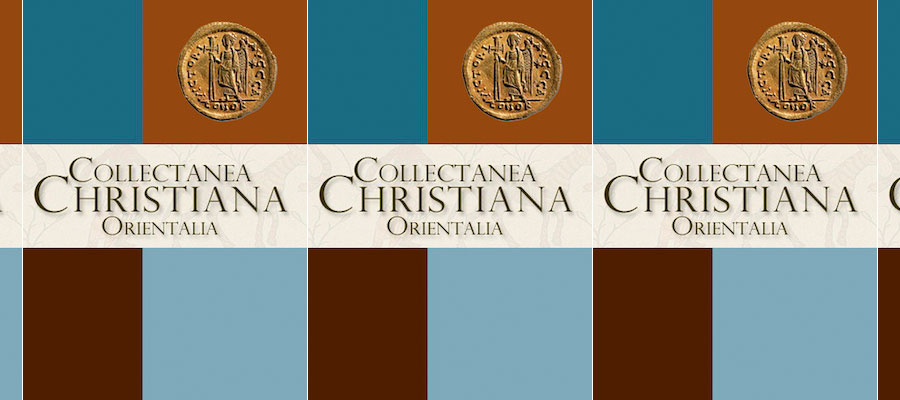Collectanea Christiana Orientalia, volume 20 (2023). [Open Access]
CONTENTS INCLUDE
Al-Fārābī’s ‘Isrāʼīl’ and ‘Quwayra’: On the Two Christian Mutakallims Who Transmitted Philosophy from Ḥarrān to Baghdad.
Najib George Awad
There has been a time when scholars conducted lengthy investigations on the story of the transmission of Greek philosophy from the Roman Alexandria to the Abbasid Baghdad vis-à-vis Antioch and then the city of Ḥarrān. During the past three decades, scholars started to deconstruct the ‘from Alexandria to Baghdad’ narrative. Many scholars deem Ibn Abī Uṣaībiʿa reports on a story of such transmission related by the philosopher al-Fārābī in the former’s book, ʿUyūn al-Anbāʼ fī Ṭabaqāt al-Aṭibbāʼ, to be historically unreliable and untenable. It is because of this conviction, scholars almost never paused at al-Fārābī’s/Ibn Abī Uṣaībiʿa’s association of the transmission of philosophy to Baghdad with two students, who learned philosophy from a Ḥarrānian teacher, called ‘Isrāʼīl al-Usquf’ and ‘Quwayra’. Opposite to the undermining of the value of chasing after their identities, this essay tackles directly the question of the real identity of the two persons called ‘Isrāʼīl’ and ‘Quwayra’. The essay searches for these two persons by pausing at some historiological and biographical attestations one finds in extant, early Muslim and Christian historiographies, and it then proposes that the data available in our hands strongly suggests that these two persons can quite tenably and validly be the Nestorian Isrāʼīl of Kashkar and the Melkite Theodore Abū Qurra, the two intellectuals and mutakallims who were quite known within the circles of theological and philosophical reasoning in the third/ninth century’s Baghdad.
“The Abomination of Desolation”: Eastern Christian Apocalyptic Literature and the Symbolic Construction of Islam
Emmanouela Grypeou
This article focuses on the Christian apocalyptic literature that was produced as a specific reaction to the emergence of Islam and the consolidation of the Islamic rule in the Eastern provinces of Byzantium. The discussion examines how these texts re-cycled, used and manipulated long established cultural stereotypes, biblical exegetical topoi and traditional apocalyptic motifs in order to construct an image of the Muslims as the symbolic “Other”.
Recent Identifications among the Palimpsests from the Cairo Geniza: A Comprehensive List of Christian Palestinian Aramaic Texts
Christa Müller-Kessler
This article presents a new study of the Christian Palestinian Aramaic palimpsest from the Cairo Genizah. It includes a number of new identifications. An appendix is added with three patristic texts.
La Vida de santa Eufrosine (BHG 625-625b). Introducción, edición crítica y traducción
Ángel Narro and Israel Muñoz Gallarte
La Vida de santa Eufrosine (VEuphr), originariamente escrita en griego, pertenece al grupo de narraciones denominadas de “santas travestidas” y constituye uno de los ejemplos más paradigmáticos de este tipo de biografías de mujeres piadosas, que pasan la vida en un monasterio masculino camufladas bajo la apariencia de un monje y, solo al final de la vida, se descubre su identidad para toda la comunidad.
Una versión inédita de la Vida de Eufrósine (BHG 625b) en el ms. Paris. gr. 1538
Israel Muñoz Gallarte and Ángel Narro
El manuscrito BHG 625b es una versión inédita de la vida de santa Eufrósine.
A fragment of the Book of Revelation in the Taylor-Schechter Genizah Collection (T-S AS 177.202)
Peter Tarras
Edition and study of a new fragment of the Book of Revelation in the Taylor-Schechter Genizah Collection (T-S AS 177.202).
A lost manuscript of the Book of Philalethes by Severus of Antioch
Youhanna Nessim Youssef
Severus of Antioch is by far the most important author of the non-Chalcedonian churches. However, his life attributed to Athanasius of Antioch survived in few Coptic Sahidic texts and a single folio in Coptic Bohairic and three manuscripts in Arabic while there are other manuscripts that did not survive.
